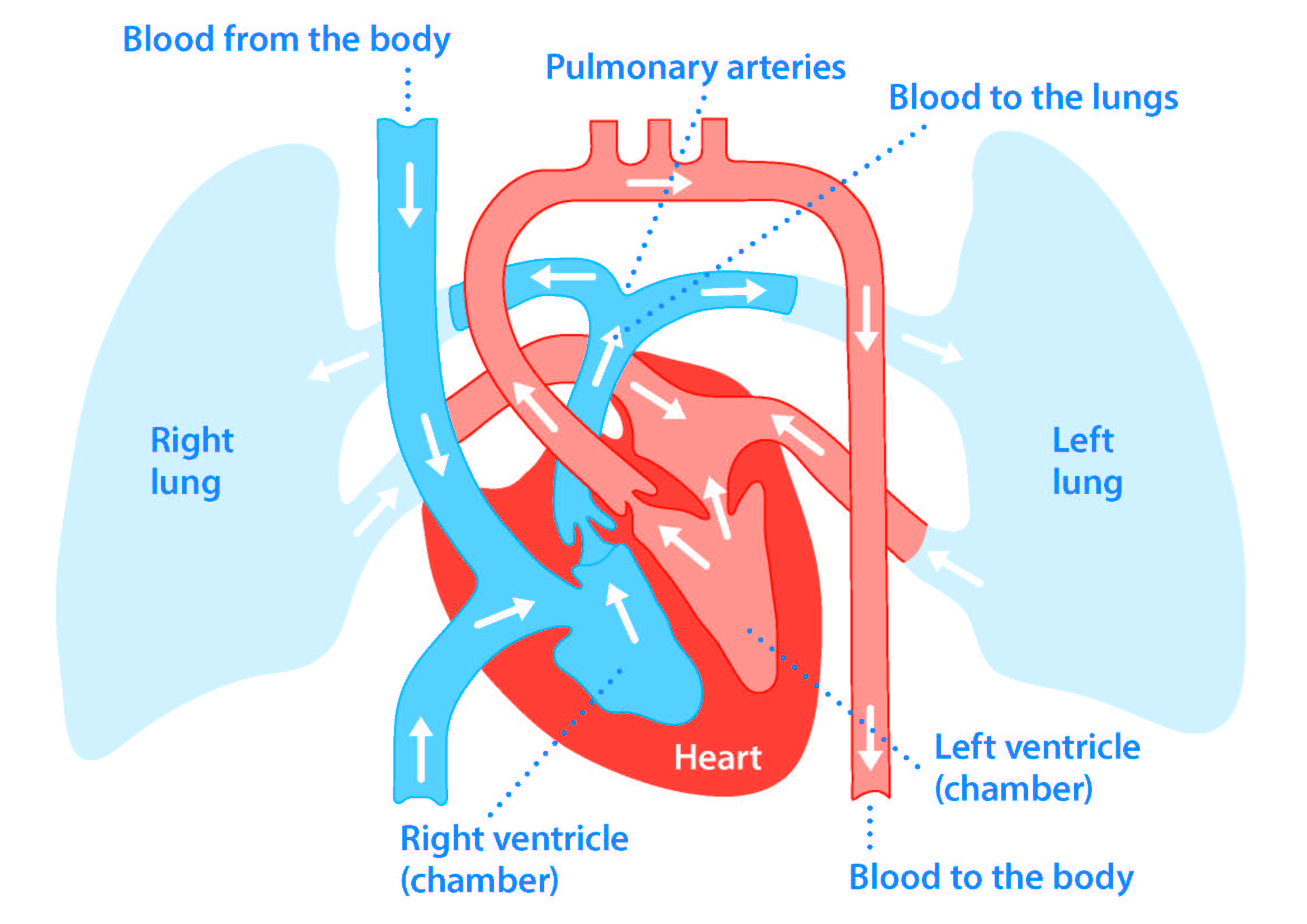Pulmonary hypertension is when you have high blood pressure in the blood vessels that carry blood to your lungs. These vessels are called the pulmonary arteries. It’s not the same blood pressure measured by a cuff on your arm.
Pulmonary: to do with your lungs
Hypertension: high blood pressure
How do the heart and lungs work together?

- Blood from the body comes back to your heart in large veins. This blood has a low oxygen level, because some of the oxygen has been used by your muscles and other organs.
- The veins take the blood into the right side of your heart. The right side of the heart is a low pressure system and it pumps blood to the lungs. The main pump on the right side is called the right ventricle.
- In the lungs, the blood picks up oxygen (and the waste gas carbon dioxide is removed). Blood coming back from the lungs goes to the left side of the heart.
- The left side of the heart is a higher pressure system and pumps blood high in oxygen to the rest of your body.
What happens if you have pulmonary hypertension?
If you have pulmonary hypertension, it means the right side of your heart has to work harder to push blood through your lungs. This is because the blood vessels in the lungs (pulmonary arteries) are blocked, narrowed or destroyed. The result is higher pressure in the right ventricle (chamber) that pumps blood round your lungs.
Over time, the right ventricle begins to struggle with this extra work. It can become weaker and pump less effectively. This causes symptoms of pulmonary hypertension.
Watch this helpful explainer video from the Pulmonary Hypertension Association UK (PHA-UK).
Who gets pulmonary hypertension?
Pulmonary hypertension is a rare condition that can affect people of any age. According to the NHS, it’s more common in people who have another lung or heart condition. PH can also be associated with other medical conditions such as connective tissue conditions, congenital heart disease, HIV, genetic causes, or it can happen by itself. Read more about the different types of PH and what causes it.
According to the Pulmonary Hypertension Association UK, PH is more common in women. Studies have shown that the female sex hormone is a risk factor for pulmonary arterial hypertension (PAH), with PAH around four times more likely in women.
What are the symptoms of pulmonary hypertension?
Symptoms of pulmonary hypertension include:
- breathlessness – this is the main symptom of PH
- feeling tired
- feeling dizzy or faint, especially when you exercise
- a racing heartbeat
- leg, ankle and tummy swelling
- chest pain, especially after exercise.
These symptoms may get worse when you exercise, or when you do activities like walking up hill or up the stairs.




